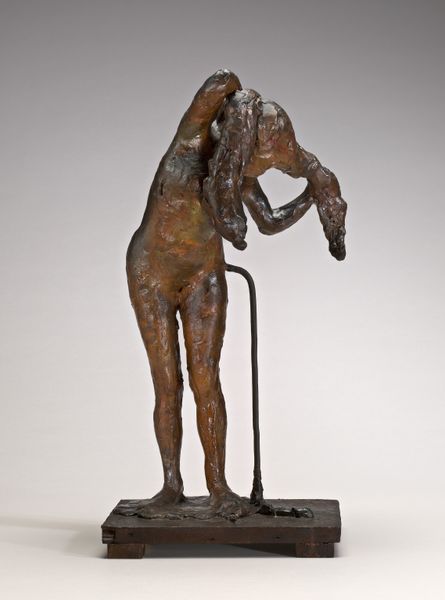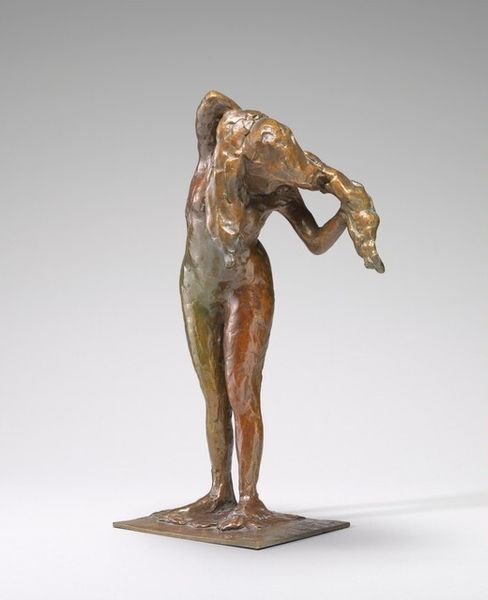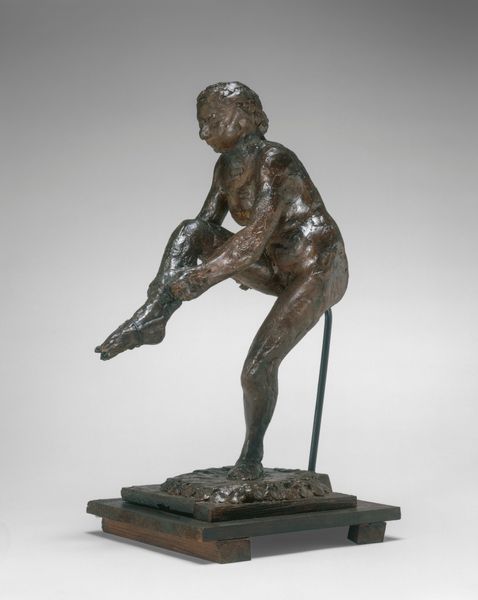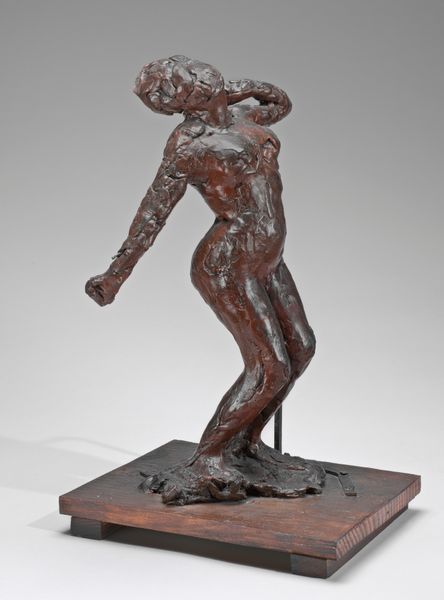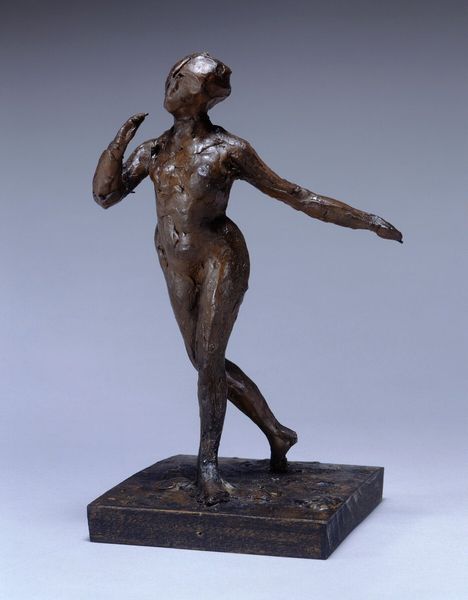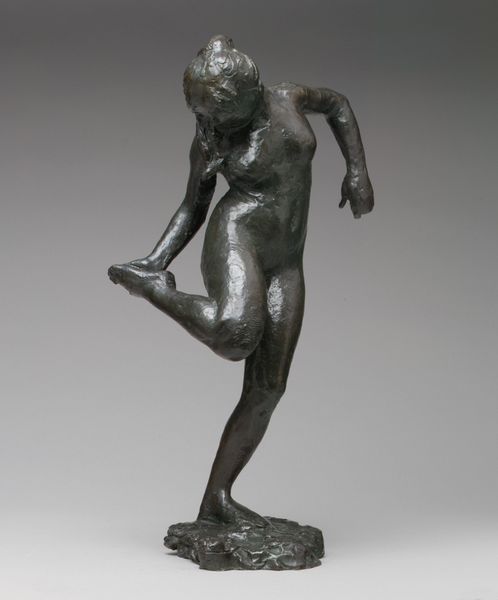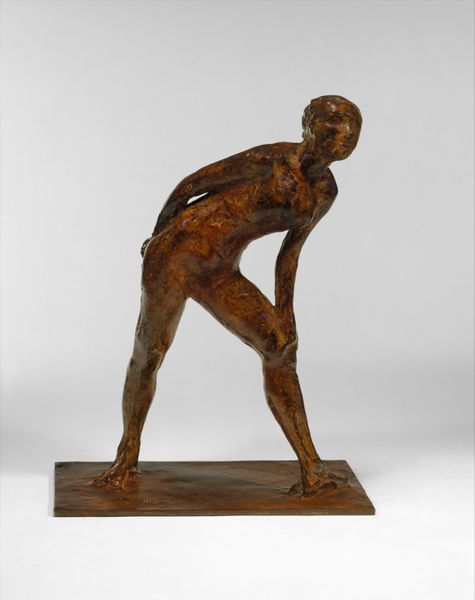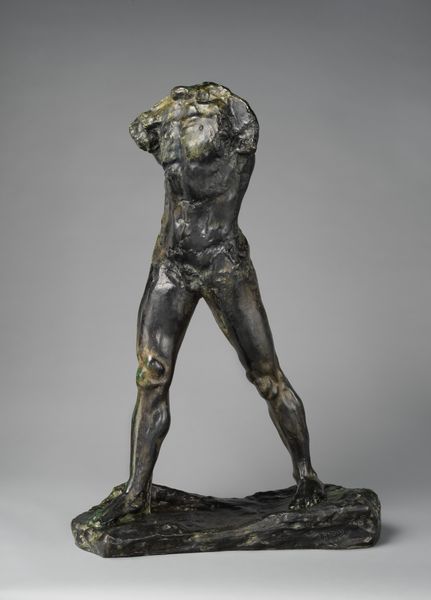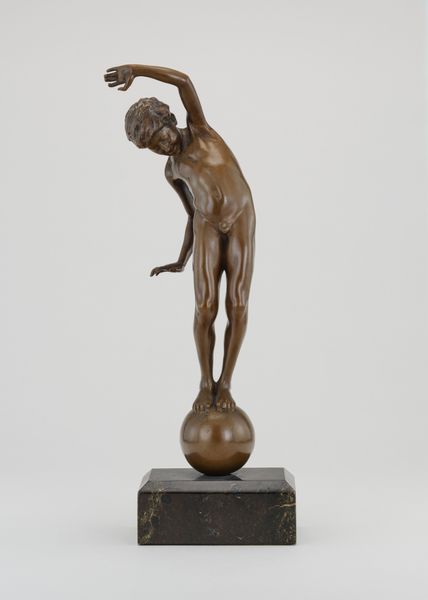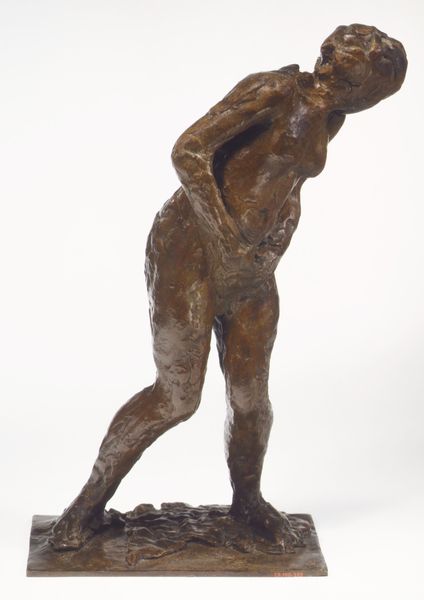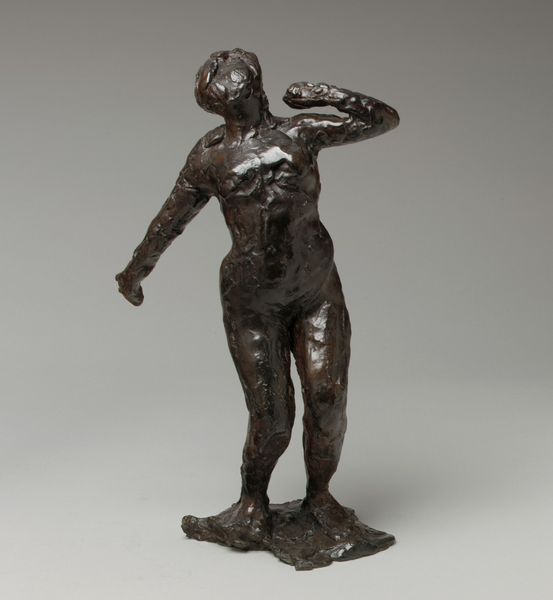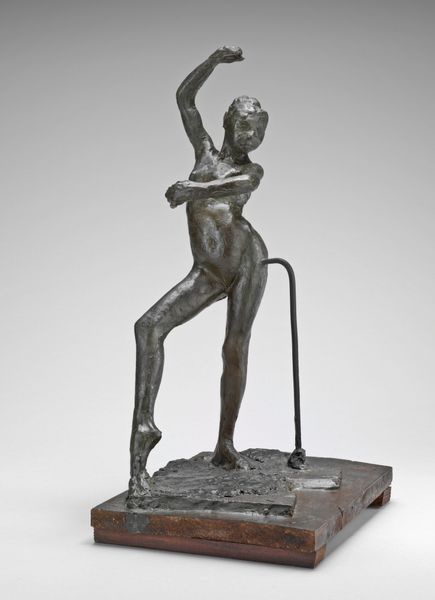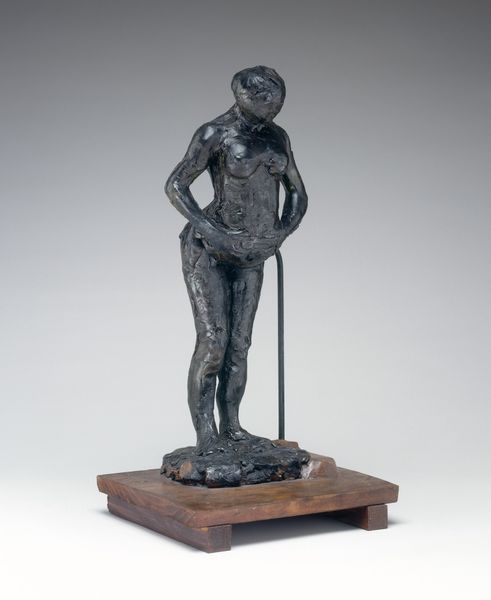
Dimensions: 18-1/4 x 9-3/4 x 6-5/8 in. (46.4 x 24.8 x 16.8 cm.)
Copyright: Public Domain
Curator: Standing before us is Edgar Degas' "Woman Arranging her Hair," a bronze sculpture crafted between 1895 and 1920, now residing at The Met. Editor: There’s such raw, unvarnished honesty in the gesture, isn't there? She’s so engrossed in this intimate ritual; I feel almost like I'm intruding on a private moment, yet drawn in at the same time. Curator: Degas, as you know, was fascinated by capturing women in unguarded moments. He defied conventions and aimed to present women without idealization, without that theatrical posturing we saw in salon art. He wanted that truth. Editor: That’s what gets me. There's a very modern, immediate feel to the work despite its age. You can almost feel the weight of her hair, the slight strain in her back. And bronze – cold, hard – made to feel so…alive. Curator: Degas was very interested in showing that. What's intriguing is how his works were shaped by his own elitist politics. For Degas and others like him, there was a kind of conservative anxiety that the domestic lives of the bourgeois and working classes was breaking down at this time and being opened to scrutiny. The modern art in their opinion should seek out and document such disruption. Editor: Huh, so this fascination was a document of societal anxieties? That reframes the viewing experience. All I see at first is just the simple beauty in the everyday. A woman and her hair, no drama or social statement intended, just a genuine moment captured for all time, yet there's a political reason that is part of its background... Curator: Absolutely, it gives nuance to Degas's artistic intention, how his art intersected with and expressed his cultural context. Degas' sculpture pushes our awareness of these complex relations between artistic production and conservative social norms. Editor: Which just shows art never exists in a bubble, does it? I walk away now, still seeing that woman struggling with her hair but knowing so much more. I feel oddly empowered. Curator: Agreed. These private sculptures give us so much, both what Degas intended and much that's born by how we're made to feel looking at this sculpture today. It speaks volumes.
Comments
No comments
Be the first to comment and join the conversation on the ultimate creative platform.
